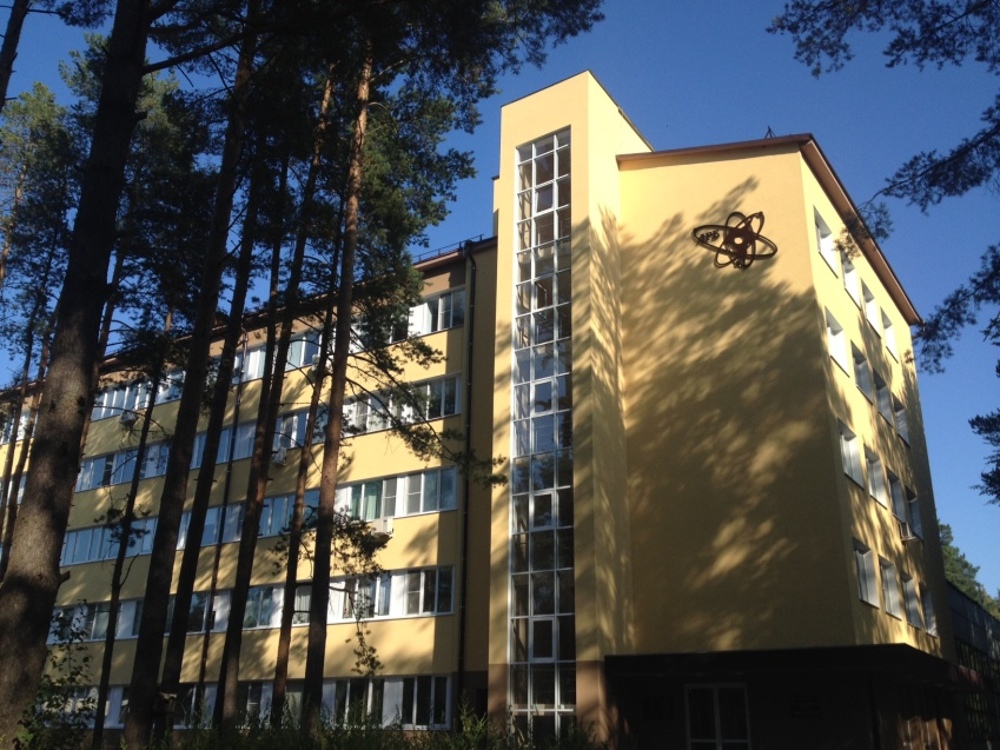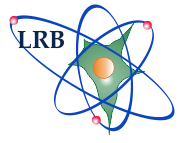
Radiation Genetics and Radiobiology
The study of induction of mutations different nature by ionizing radiation in yeast Saccharomyces cerevisiae was continued [1]. Mutagenic property of ionizing radiation was characterized by using four different mutator assays. They were a forward mutation rate assay that detects mutations inactivating the arginine permease gene (Canr mutations) and reversion assays detecting mutations that revert a 4-base insertion in the LYS2 gene or that revert a +1T insertion in a stretch of 6 T`s in the HOM3 gene. The reversions to Lys+ and Hom+ are due to deletion of a single nucleotide predominantly. Induction of mutations by γ-ray was studied earlier. The induction of mutations by UV-light and heavy ions is investigated at present. Induction of mutations in haploid yeast cells by 7Li-ions with LET=17 keV/μm was tested. The curves had nonlinear character.
A plasmid system is used for quantitative analysis of extended deletion (about several kbp) formation by ionizing radiation. Dose dependences of induced deletions from UV-light and γ-ray had nonlinear character. The heavy ions (7Li, 17 keV/μm) also induce this type of mutation. The curves had nonlinear character as well.
The study of genetic control of genetic stability and DNA damage-induced arrest of cell cycle progression (checkpoint) was continued. Earlier the several SRM genes have been identified and some of them have been localized (SRM5/CDC28, SRM8/NET1, SRM12/HFI1). Now the attempt to clone and identify SRM2 gene is carried out. It is planned to study influence of srm mutations on stability of recombinant plasmids. We showed that srm2 mutation decrease stability of centromeric (YCp50) and non-centromeric (YRp12) ARS-containing plasmids.
Together with Institute of Max-Plank (Berlin) the srm5/cdc28-srm mutation was investigated. Sequencing analysis of cdc28-srm revealed a single nucleotide substitution of glycine with serine in position 20 (G20S) in the conservative G-rich loop of protein kinase CDC28. The central role that cyclin-dependent kinases play in the timing of cell division and the high incidence of genetic alteration of CDKs or deregulation of CDK inhibitors in a number of cancers makes CDC28 of yeast Saccharomyces cerevisiae very attractive as a model for studies of mechanisms of CDK regulation. Together with group of MD simulations the investigation of influence of cdc28-srm mutation on the structure of kinase (Fig. 1) and interactions with substrates and regulatory proteins was carried out [2]. The crystal structure of human CDK2 that has served as a model for the catalytic core of other CDKs, including CDC28, was used. Nanoseconds long molecular dynamics (MD) trajectories of human CDK2 (fully active complex pT160-CDK2/cyclin A/ATP/substrate) were compared. The MD simulations of substitution G16S (G20S in CDC28) in these complexes shows conformational changes of CDK2 structure leading to the moving of the G-loop away from ATP and opening of the CDK2 substrate binding box. Deformation of G-loop has consequences such as increase of distance between ATP and substrate. Apparently this is the reason of kinase activity inhibition.
The investigations of chromosome aberrations induction in human peripheral blood lymphocytes by low doses of ionizing radiation with different LET have been continued. The results obtained earlier were confirmed on blood samples of 6 donors (Fig. 2). At the doses 1-5 cGy the cells shown the highest radiosensitivity (hypersensitivity - HS), mainly due to chromatide-type aberration, which are typical to those spontaneously generated in the cell and believed not to be induced by irradiation of unstimulated lymphocytes according to the classical theory of aberration formation. With increasing dose the frequency of aberrations decreased significantly, in some cases to the control level. At the doses above 50-70 cGy the dose-effect curve have become linear [3]. Individual variability in amplitude and position of HS pick was observed. In spite of this, statistically significance of non-linearity of dose-effect curves and availability of HS region were evidenced by regression analyses applied to all donor’s data. The similar response to low doses of ionizing radiation with LET 0,3-16 keV/μm was revealed.
In collaboration with biophysical group of GSI (Darmstadt, Germany) the series of experiments have done on normal human fibroblasts to examine the relationship between cell proliferation and expression of the chromosomal damage after X-ray and particle irradiation (195 and 10 MeV/nucleon C ions; 11 MeV/nucleon Ni ions). It was found that irradiation of confluent cultures of fibroblasts both with sparsely and densely ionizing radiation cause drastic, probably permanent cell cycle arrest in initial G0/G1 phase in dose- and LET-dependent manner. As a result only few irradiated cells can progress to first mitosis. Measurements of chromosomal damage in first cells cycle at multiple time points post-irradiation shows the increase of aberration yield with time up to twofold for the lower doses of low-LET radiation. At higher doses and high-LET irradiation this effect is less pronounced or even disappears due to the rapid chronic cell cycle arrest of severely damaged cells and, as a result, their inability to reach mitosis. These observations are consistent with the other studies that indicate that this response is a specific strategy of fibroblasts to maintain genetic integrity of population and prevent the expansion of genetic alterations.
In collaboration with biophysical group of Institute of Biology (Keltce, Poland) the series of experiments have done. The aim of this study was to investigate if deviations from DNA-proportional distribution of high LET radiation-induced chromosomal aberrations are individually variable. In all published studies dealing with individual radiosensitivity, lymphocytes were exposed only to low LET radiation. The grow of exposure to heavy ions in such fields as aircraft and space travel and due to their increasing application in radiotherapy cause increasing interest in radiobiological sciences.This is the first study of individual radiosensitivity of chromosomes of human peripheral blood lymphocytes to heavy ions. Our results suggested that the inter-donor variability is a potential source of error in calculating the dose absorbed by one individual on the basis of a calibration curve generated with lymphocytes of a different individual and this error can be minimized by choosing chromosome 2 for analysis. Moreover, present results support the view that the ratio of centric rings/dicentrics (F-ratio) could be a signpost to estimate to high LET exposure. Thus, this is especially interesting for the radiobiology of heavy ions. Present results cause next questions in the field of radiosensitivity to high LET radiation and the further investigating are need.
The estimation of influence of therapeutic proton beam (phasotron JINR) action on the human cells after cytogenetical damages in peripheral blood lymphocytes. The peripheral blood lymphocytes were used as a model for the study of human cell damages. The purpose investigation was the study of quantity and quality particularities of chromosome aberrations arising and estimation of proton beam efficiency for initial energy 170 MeV and the Bragg peak by cytogenetical tests. The effects of initial beam protons and γ-rays at all dose diapason did not differ practically. The Bragg peak protons are higher efficiency also as in compared to protons of initial beam and γ-rays. So the fraction of cells with multitude aberrations (3 and more) exceeded in 2,5-3 times their number after irradiation by protons 170 MeV (27 % and 10 % accordingly). After the dose of 5 Gy multitude aberrations arise in more number of cells and this destruction decreased (89 % and 81 % accordingly) [4].
In real practice an irradiation of tumors is realized dose diapason with a several directions (up to 7). This method decreases a damage of normal tissue. Analysis of obtained data has shown that effects shall differ the most essentially at summery dose of 3-4 Gy on the tumor. So at the dose of 3 Gy fraction of cells with chromosomal aberrations is about 80 %, but it does not exceed 10 % in normal tissues. The difference may by even more if it take into consideration that, firstly, irradiation causes a delay of cell division start, as many in vertigator have shown. It is pronounced for heavy damaged cells by high radiation doses and part of them does not arrive mitosis at all. As we have noted, the fraction of these lymphocytes with great number of chromosome aberrations increased essentially. Therefore it is very likely some part of such cell was not registrated during microscoping and secondly, tumors cell population is asynchronous and the most part of cells is more radiosensitive then the cells of normal tissue and the irradiated lymphocytes, that are in G0-phase of cell cycle.
|


